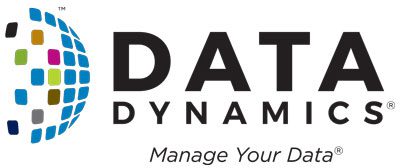The Cloud Security Alliance (CSA) research shows that 90% of CIOs have seen data migration efforts fail or be disrupted. Several factors may contribute to this, including:
- Extend downtime, resulting in performance degradation
- Security flaws that expose potential hazards at the last minute
- Budget overspending and resource draining
- Delayes in project completion
Enterprises must examine all potential problems and develop a comprehensive cloud data migration strategy that aligns business priorities, addresses security concerns, handles unstructured data, and ensures low risk and cost.
Here’s a step-by-step approach that can assist enterprises in selecting and designing the best cloud data migration strategy:
- Map hybrid cloud goals: The first and most important step any firm should take when implementing a hybrid cloud architecture is to match business objectives with the cloud strategy. This stage will determine which key applications and data must initially be migrated to the cloud.
- Evaluation of apps, data, and operations: This procedure is required to save money on migration fees. After mapping goals and analyzing needs, establishing the enterprise’s cloud-ready applications and datasets can help better prioritize migration. For example, migrating old applications to the cloud can be time-consuming and costly in a financial services organization compared to moving apps.
- Obtain the necessary resources and skills: The primary focus of every firm should be on its core functions. So why waste time and money hiring and training cloud workers when third-party experts know how to make cloud adoption effective and effortless? Finding the ideal cloud solution provider who shares your goals while avoiding vendor lock-in might be advantageous.
- Maintain data integrity: Enterprises with a sea of personal and sensitive data might be a tempting target for attackers if data integrity is not maintained. Any data loss in such a controlled setting can seriously affect the organization. Ensuring data security and compliance, as well as reliable backup solutions and the recommended practices listed below, can assist limit risks and improve data integrity.
- Quarantine Sensitive Data: Sensitive data should be quarantined by moving and isolating them to a more secure location, such as a share on a file storage resource or an object storage bucket.
- Restrict Access to Sensitive Data– Using intelligent file re-permissions and access control, exclude public access to the reported sensitive files.
- Immutable Audit Reporting – A digital chain of custody for files that records critical business information each time the file is accessed or modified. Blockchain technology is recommended.
- Identify a comprehensive cloud solution: Cloud migration is frequently misunderstood as a simple data lift-and-shift operation, but it is a sophisticated, time-consuming, data-driven and resource-intensive procedure. An end-to-end methodology that can assist across the whole cloud adoption life cycle can aid in methodical cloud data migration. Using a reputable data movement program can cut your efforts tenfold.
If your firm struggles to determine the best strategy to migrate to the cloud, here are five essential questions to consider before making your move.
- Do you have a digital strategy in place that allows for innovation but is unable to fully embrace the public cloud?
- Do you experience scalability and performance issues when your IT infrastructure must handle unexpected or sudden surges in demand?
- Do you have trouble managing diverse environments and technologies from various vendors?
- Do you have any regulatory mandates to keep specific procedures and data on-premises?
- Do you intend to develop your firm into new markets and geographical areas?
If your answer to any of the above questions is yes, you will be able to benefit from a hybrid cloud strategy. To make your cloud journey easier, Azure has created Zero License Cost Azure File Migration Program and is sponsoring the use of Data Dynamics’ StorageX Migrations. StorageX is Data Dynamics’ leading unstructured data management solution that delivers policy-based data management with no vendor lock-in. With StorageX, organizations can modernize their infrastructure to drive cost reduction, risk mitigation, and policy automation.
Begin your cloud journey with three simple steps and zero license migration costs with Microsoft Azure. To know more, visit www.datadynamicsinc.com/microsoft or contact us at solutions@datdyn.com.






